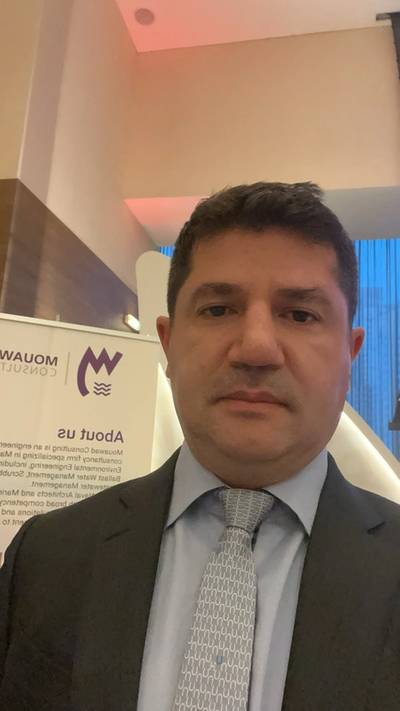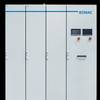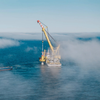Jad Mouawad Responds to “Getting the Numbers Right”
Wendy Laursen’s article Getting the Numbers Right, published in the August issue of Maritime Reporter, sparked debate from ballast water management experts. Here Jad Mouawad, CEO of Mouawad Consulting, provides his feedback on the article which outlines the challenges the industry has faced trying to reduce the occurrence of invasive marine species transferred by ballast water.
We have now the vast majority of ships fitted with ballast water management systems (BWMS). I would say 99% of them are type approved according to Ballast Water Management Code and USCG so we know they work within given operational conditions, if operated and maintained properly.
And here starts the trouble:
1. A BWMS is installed in a large array of pipes, valves and tanks. Almost none close properly, they leak and they may trap water for longer periods of times.
2. Operators (the crew) must learn (be taught) how to operate the system, how to figure out when it is not working properly, and most importantly, what to do when it does not work properly (fix it, bypass, challenging water, contingency, etc.)
3. Operators must keep those systems maintained and calibrated routinely; but
4. BWMS makers must make available spare parts and proper instructions (written and training); and
5. BWMS makers must be able to answer basic questions about the efficacy and effectiveness of the technologies they use.
I believe we will use the next 10 years to work around these five topics, improve them, until we reach a level of confidence that BWMS work, but sometimes they don’t - like every other existing machine.
Here is a quote from a Master after my colleague Mark finished fixing their BWMS:
“I would like to thank you and Mark for your excellent service. We see that you are both proactive, quick response and providing in-depth knowledge of this BWTS. This is crucial for us. We struggle onboard with frequent changing responsible officer for the BWTS, and constant training and familiarization of the system makes operation and maintenance a huge challenge for us. In addition, we are lacking spare parts. Mark has given us vital training and working excellent with our crew to give us the knowledge and competence to maintain system better. The service report will be part of our training going ahead.”
If we leave the nice words aside, what do we take from this feedback? The importance of items 2, 3 and 4 above, and I have received loads of similar comments, all concentrated around the same topic: maintenance, training, spare parts.
This is something BWMS makers must take, understand and work a lot to improve. With the risk of generalization, getting hold of spares for a BWMS is not an easy task, even for us with many people on ships around the clock. So, both the Ballast Water Equipment Manufacturers Association (BEMA) and the makers have a lot of work to do there: this is reality.
Here is a quote from another shipowner: “We decided to change out the xxx system at the recent docking and have fitted xxx system which we have had good experience with and which is installed on the sister vessels.”
Two things I gain from this feedback; first, the original BWMS was so difficult to keep in a working condition that it was cheaper to just change it (Items 1 and 5 above). Second, there are BWMS that actually work fine. I can testify to that because they never call us for these other systems, they just work (Item 5).
Here, the International Chamber of Shipping (ICS) and others must work very hard towards their membership to emphasize the importance of training and maintenance.
I also hear some Administrations and shipowners complain about areas where the water is too challenging. Well, here is a simple question: in the last 15 years, how many countries actually sampled their harbor waters systematically to identify the water quality there? And where is this data published on the IMO’s GISIS?
With this data from countries around the world, we could have improved both BWMS and the BWMS Code to reflect the reality shipowners are facing. Instead, we have to work with anecdotes coming from people who just joined the discussion: systems don’t work, turbidity is too high, total suspended solids (TSS) is blocking filters,… Anecdotes with zero credibility.
The above feedback illustrates the puzzle we have to put together and where everyone, if they contribute positively, will make sure that we reach the goal. BWMS work, and sometimes they don’t. And when they don’t, we have procedures telling the master how to go about it.
Finally, I want to challenge the industry: Administrations, manufacturers and shipowner NGOs attending the IMO. I am very critical that people with experience in BWMS regulatory work have moved on to more cool and exciting stuff, like hydrogen fuel, nuclear power, carbon capture etc. BWMS makers have started looking and actually already are at the next big thing (carbon capture, aquaculture…).
All this has led to a lack of knowledge and experience in the group regulating how the BWMS implementation will work. We have at least 10 years of hard work, but we see even BEMA moving on to other cool stuff like hull biofouling and expanding to other areas. What signal is this giving to owners? Well, we sold you the systems, go figure out the rest yourselves.
My challenge is for everyone to put their best back to the BWM Convention so we can finish the work. We are not done yet.










